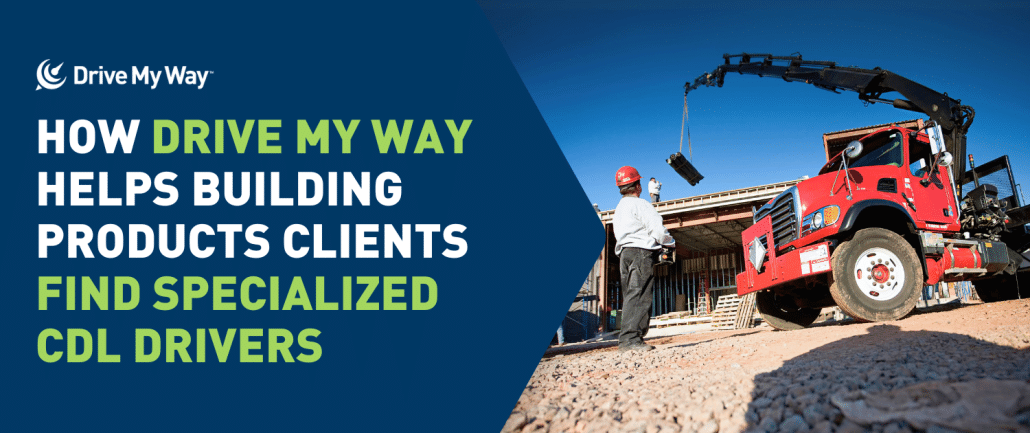 For carriers and recruiters in the trucking industry, keeping a close eye on recruitment costs is more important than ever.
For carriers and recruiters in the trucking industry, keeping a close eye on recruitment costs is more important than ever.
The metric you’ll need at the center of your hiring strategy is Cost Per Hire (CPH). By understanding exactly what goes into this number, and the ways you can strategically lower it, you can improve hiring efficiency, reduce wasteful spending, and ultimately hire more qualified CDL drivers for less.
What Is Cost Per Hire (And How to Calculate It)
At its core, Cost Per Hire is a simple but powerful recruiting metric. It reflects the average investment your company makes to bring one new driver on board.
The formula is straightforward:
Cost Per Hire = (Total Internal Recruiting Costs + Total External Recruiting Costs) ÷ Number of Hires
What belongs in “Internal” vs “External” Costs
Internal costs include the time and labor of your in-house recruiting team or hiring managers (salary, benefits, overhead, administrative support, interview-related time, etc.), internal HR or compliance resources, training for recruitment staff, and any internal referral bonuses you pay.
External costs cover job-board or job-ad fees, third-party recruiter or agency fees (if used), background screening and drug testing expenses, recruiting software or applicant tracking system (ATS) costs, costs of job fairs or recruiting events, sign-on or signing bonuses, relocation incentives, and any marketing or ad spend tied to attracting driver candidates.
To compute your CPH for a given period (such as a quarter, or year), you should gather all these expenses for that period, sum them up, then divide by the number of drivers you actually hired (not just leads or applicants).
For example: if over a year your total recruiting expenses (internal + external) are $120,000 and you hired 40 new drivers, your CPH would be $3,000 per hire.
Why Tracking CPH Matters
Having a clear understanding of your company’s cost per hire is important for many reasons, including:
- Budgeting & forecasting: Having a clear CPH baseline helps you forecast the cost of upcoming hiring needs (such as annual driver growth or seasonal spikes). It also enables more accurate budgeting for recruitment.
- Efficiency & process optimization: If CPH climbs without a corresponding rise in hire quality or retention, that signals inefficiency, or possibly wasted spend on channels that aren’t producing value or staff that are not effectively converting applicants.
- Comparing hiring methods: With CPH, you can benchmark different recruiting strategies (referrals, ads, job fairs, agencies, internal sourcing) side by side and invest in the most cost-effective ones.
- Accountability & ROI on recruiting spend: Understanding CPH helps HR and recruiting teams justify recruitment budgets to company leadership, or to highlight where adjustments might be needed.
Strategies to Lower Cost Per Hire
1. Maintain and Nurture a “Ready-to-Hire” Candidate Pool
Rather than starting from scratch every time you post a new job, consider maintaining a warm database of former applicants, previous leads, referrals, or drivers who showed interest but didn’t accept a prior offer. Re-engaging these passive candidates can dramatically reduce sourcing and advertising costs, because you’ve already spent capital to attract them once.
It’s important to take time to stay in touch through occasional outreach, newsletters about company updates, or check-ins when new routes become available. This keeps your pipeline alive and can yield hires with minimal extra spend.
2. Use Data to Reallocate Recruiting Spend
When you calculate CPH, don’t stop with just the overall number. Break down costs by channel (job boards, referrals, job fairs, agencies, etc.). For example: if 25% of your recruitment budget is going toward job-fairs, but they account for only 5% of hires, that might be a signal to shift funds. On the other hand, channels with a low CPH and strong hire rates deserve more attention. It’s important to make sure you are comparing apples to apples and evaluate results on both sides. In the example above, it’s important when considering the percentage of hires based on the spend, you also consider the number of positions you are recruiting for. If only 5% of hires come from a particular channel or partner that may be a positive result if you are only listing 5% or less of your total openings toward that channel or partner.
Leverage your ATS or recruiting analytics platform to track source-of-hire, time-to-hire, and conversion-to-hire metrics. This data-driven approach helps you allocate resources more intelligently.
3. Automate and Streamline by Leveraging Tech
Modern recruiting tools (such as ATS platforms, automated screening, digital onboarding, candidate-self-serve scheduling) can reduce administrative burden, cut down on recruiter time, and accelerate the process.
Streamline your application and screening workflow to reduce drop-off and avoid unnecessary steps. The faster and smoother the process, the less time internal teams spend per candidate, which reduces your per-hire labor costs.
4. Strengthen Employee Referrals and Retention-Based Hiring
Referral programs remain one of the most cost-effective recruiting channels. Encourage current drivers and employees to refer former colleagues or acquaintances and then reward successful referrals. Since referred candidates often onboard faster, perform better, and stay longer, they can shorten time-to-hire and reduce turnover, which, in turn, lowers your long-term CPH when factoring in retention cost.
5. Reevaluate Sign-On Bonuses, Incentives
While sign-on bonuses can attract drivers quickly, they also inflate upfront costs. Instead of large lump-sum bonuses, consider tiered incentives tied to performance or tenure.
For example, a smaller bonus upon hire, with additional incentive after 6 or 12 months of safe driving or meeting performance benchmarks. This reduces risk and ensures you’re not overpaying for short-term turnover.
Also consider a transition bonus that will help a driver financially be able to transition from one employer to another, especially when they are being paid CPM. It may take a few weeks to build up mileage after orientation and training.
For more ways to stay ahead of the curve in the transportation industry in 2025, be sure to check out the rest of our Employer Blog posts and connect with us on social media.

 In a challenging hiring market, the right recruiting partner can make the difference between constant turnover and
In a challenging hiring market, the right recruiting partner can make the difference between constant turnover and  Wreaths Across America is a nationwide effort to remember our fallen heroes, honor those who serve, and teach the value of freedom.
Wreaths Across America is a nationwide effort to remember our fallen heroes, honor those who serve, and teach the value of freedom. 







